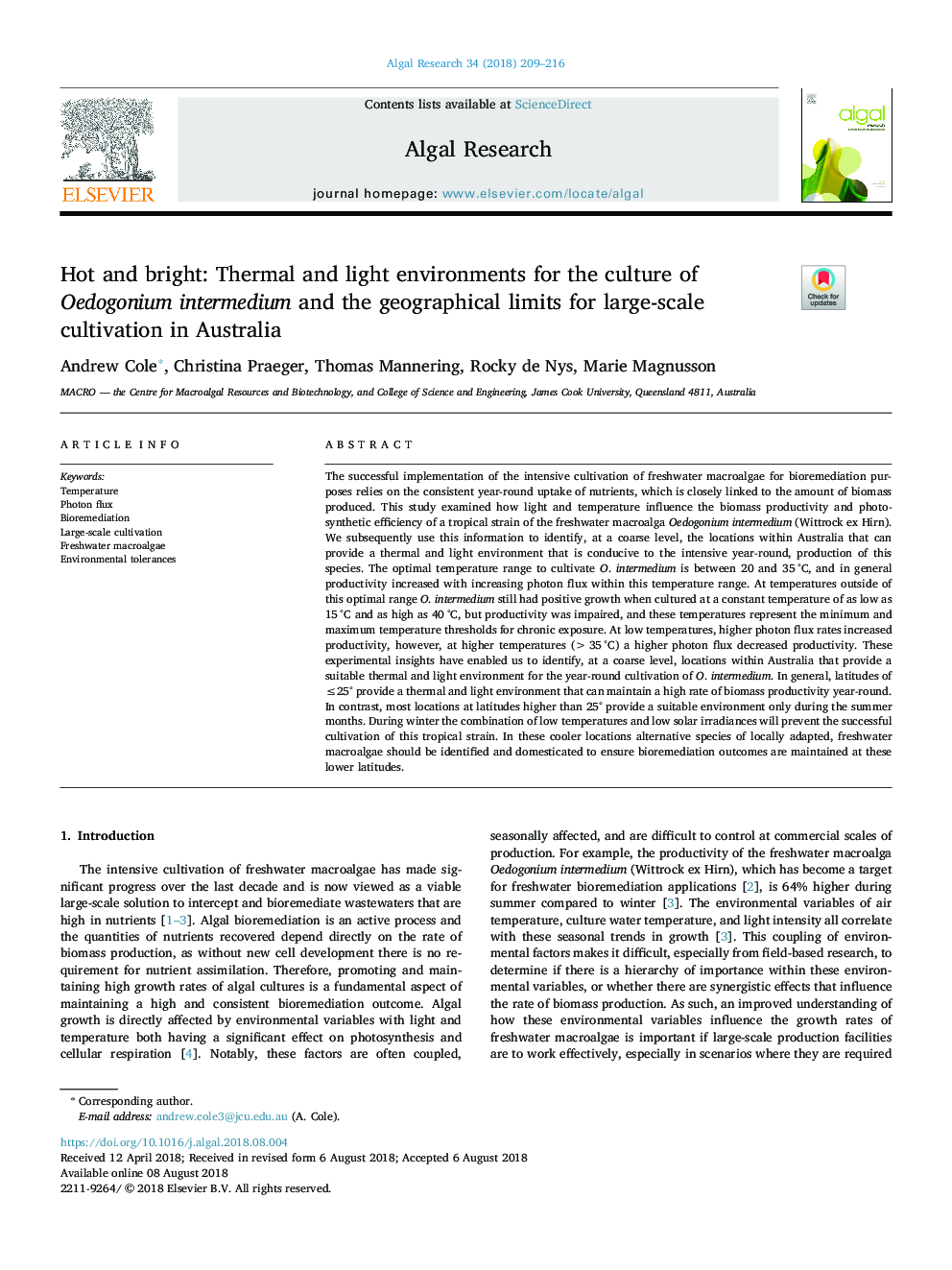| Article ID | Journal | Published Year | Pages | File Type |
|---|---|---|---|---|
| 8085577 | Algal Research | 2018 | 8 Pages |
Abstract
The successful implementation of the intensive cultivation of freshwater macroalgae for bioremediation purposes relies on the consistent year-round uptake of nutrients, which is closely linked to the amount of biomass produced. This study examined how light and temperature influence the biomass productivity and photosynthetic efficiency of a tropical strain of the freshwater macroalga Oedogonium intermedium (Wittrock ex Hirn). We subsequently use this information to identify, at a coarse level, the locations within Australia that can provide a thermal and light environment that is conducive to the intensive year-round, production of this species. The optimal temperature range to cultivate O. intermedium is between 20 and 35â¯Â°C, and in general productivity increased with increasing photon flux within this temperature range. At temperatures outside of this optimal range O. intermedium still had positive growth when cultured at a constant temperature of as low as 15â¯Â°C and as high as 40â¯Â°C, but productivity was impaired, and these temperatures represent the minimum and maximum temperature thresholds for chronic exposure. At low temperatures, higher photon flux rates increased productivity, however, at higher temperatures (>35â¯Â°C) a higher photon flux decreased productivity. These experimental insights have enabled us to identify, at a coarse level, locations within Australia that provide a suitable thermal and light environment for the year-round cultivation of O. intermedium. In general, latitudes of â¤25° provide a thermal and light environment that can maintain a high rate of biomass productivity year-round. In contrast, most locations at latitudes higher than 25° provide a suitable environment only during the summer months. During winter the combination of low temperatures and low solar irradiances will prevent the successful cultivation of this tropical strain. In these cooler locations alternative species of locally adapted, freshwater macroalgae should be identified and domesticated to ensure bioremediation outcomes are maintained at these lower latitudes.
Related Topics
Physical Sciences and Engineering
Energy
Renewable Energy, Sustainability and the Environment
Authors
Andrew Cole, Christina Praeger, Thomas Mannering, Rocky de Nys, Marie Magnusson,
